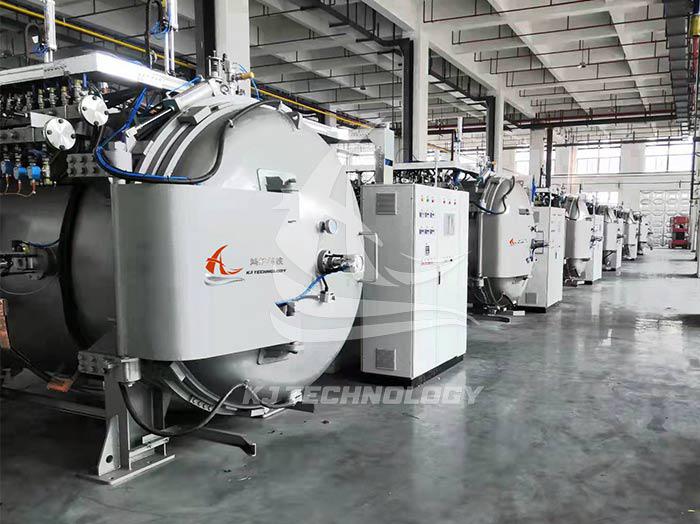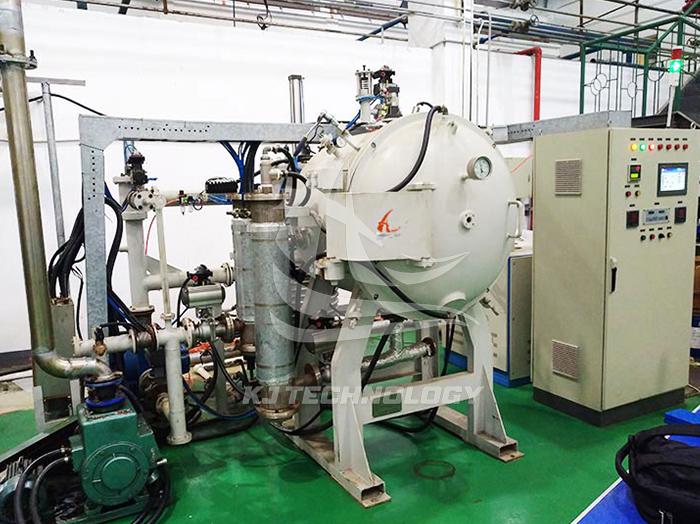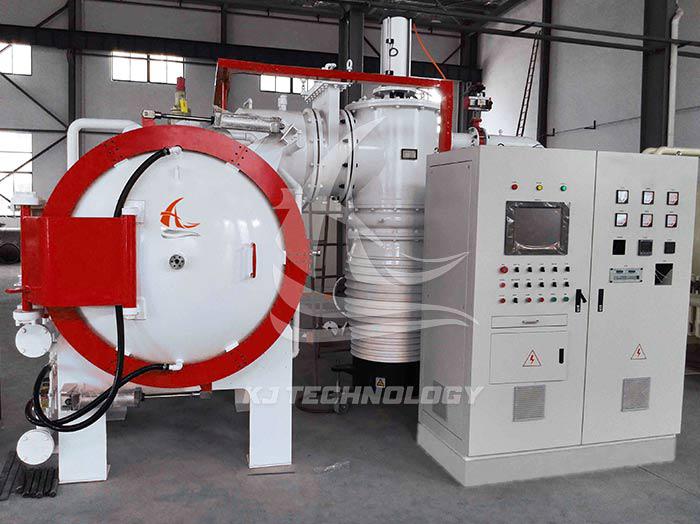What are the advantages of vacuum annealing furnaces?
 03-25-2025 Author: KJ technology
03-25-2025 Author: KJ technology
Compared with conventional annealing furnaces, vacuum annealing furnaces have many advantages, which have made them widely used in the metal heat treatment industry. The following is a detailed analysis of the advantages of vacuum annealing furnaces:
1. Improve material performance
Avoid oxidation:
The vacuum annealing furnace can perform annealing treatment in a high vacuum environment, effectively avoiding oxidation reactions of materials during the annealing process. This helps to maintain the purity and performance stability of the material, thereby improving its overall performance.
Stress relief:
By vacuum annealing treatment, residual stresses inside the material can be more effectively eliminated. This helps to improve the crystal structure of the material, enhance its plasticity and toughness, and make the material more stable and reliable during subsequent processing and use.
Improve hardness and strength:
Vacuum annealing can optimize the grain structure of materials, thereby improving their hardness and strength. This is particularly important for materials that need to withstand extreme conditions such as high strength and high pressure.
2. Accurate control and processing effect
High precision temperature control:
Vacuum annealing furnaces typically use advanced temperature control systems that can achieve high-precision temperature control. This helps ensure that the material is uniformly heated during annealing, avoiding overheating or undercooling, thereby ensuring the stability and consistency of the treatment effect.
Uniform heating:
The heating elements of the vacuum annealing furnace are evenly distributed, ensuring a uniform temperature distribution inside the furnace. This helps to reduce the temperature gradient of the material during annealing and improve the uniformity of the treatment effect.
3. Reduce pollution and improve safety
pollution-free:
The vacuum annealing furnace performs annealing treatment in a high vacuum environment, avoiding contact between the material and gases such as oxygen and nitrogen in the atmosphere, thereby reducing the possibility of pollution. This helps to maintain the purity and performance stability of the material.
Improve security:
The heating and control system of a vacuum annealing furnace is usually more advanced and reliable, capable of real-time monitoring and control of parameters such as temperature and vacuum degree inside the furnace. This helps to detect and handle abnormal situations in a timely manner, improving the safety and reliability of the equipment.
4. Wide applicability
Suitable for multiple materials:
Vacuum annealing furnace is suitable for various metal materials, such as stainless steel, titanium alloy, aluminum alloy, etc. These materials are prone to oxidation and contamination during conventional heat treatment processes, while vacuum annealing furnaces can effectively avoid these problems.
Meet multiple needs:
Vacuum annealing furnaces can meet various annealing needs, such as stress relief, recrystallization annealing, etc. This makes vacuum annealing furnaces have a wider range of application prospects in the metal heat treatment industry.
In summary, vacuum annealing furnaces have multiple advantages such as improving material properties, precise control and processing effects, reducing pollution and improving safety, and wide applicability. These advantages have made vacuum annealing furnaces widely used in the metal heat treatment industry and become an important tool for improving material quality and performance.








